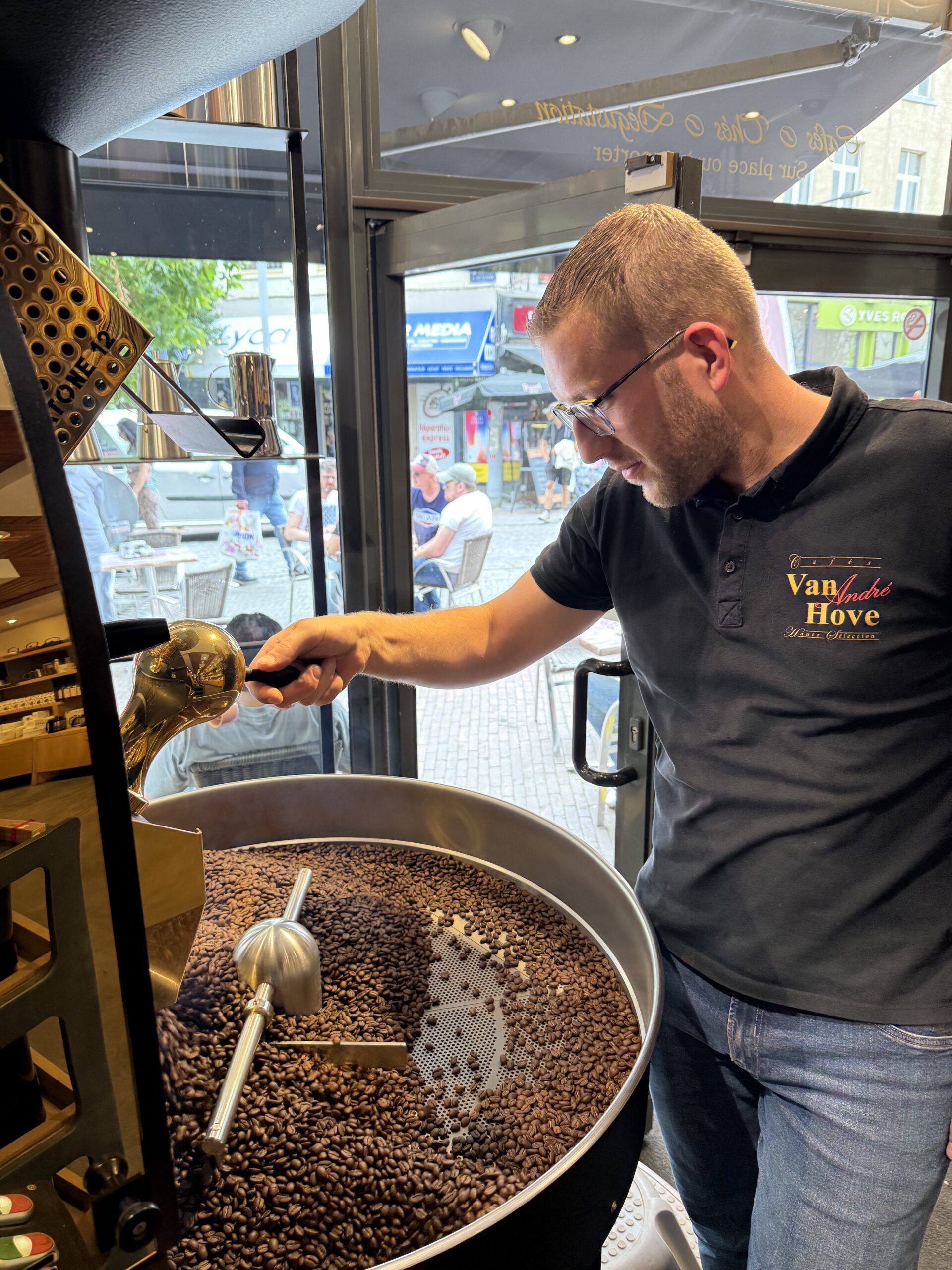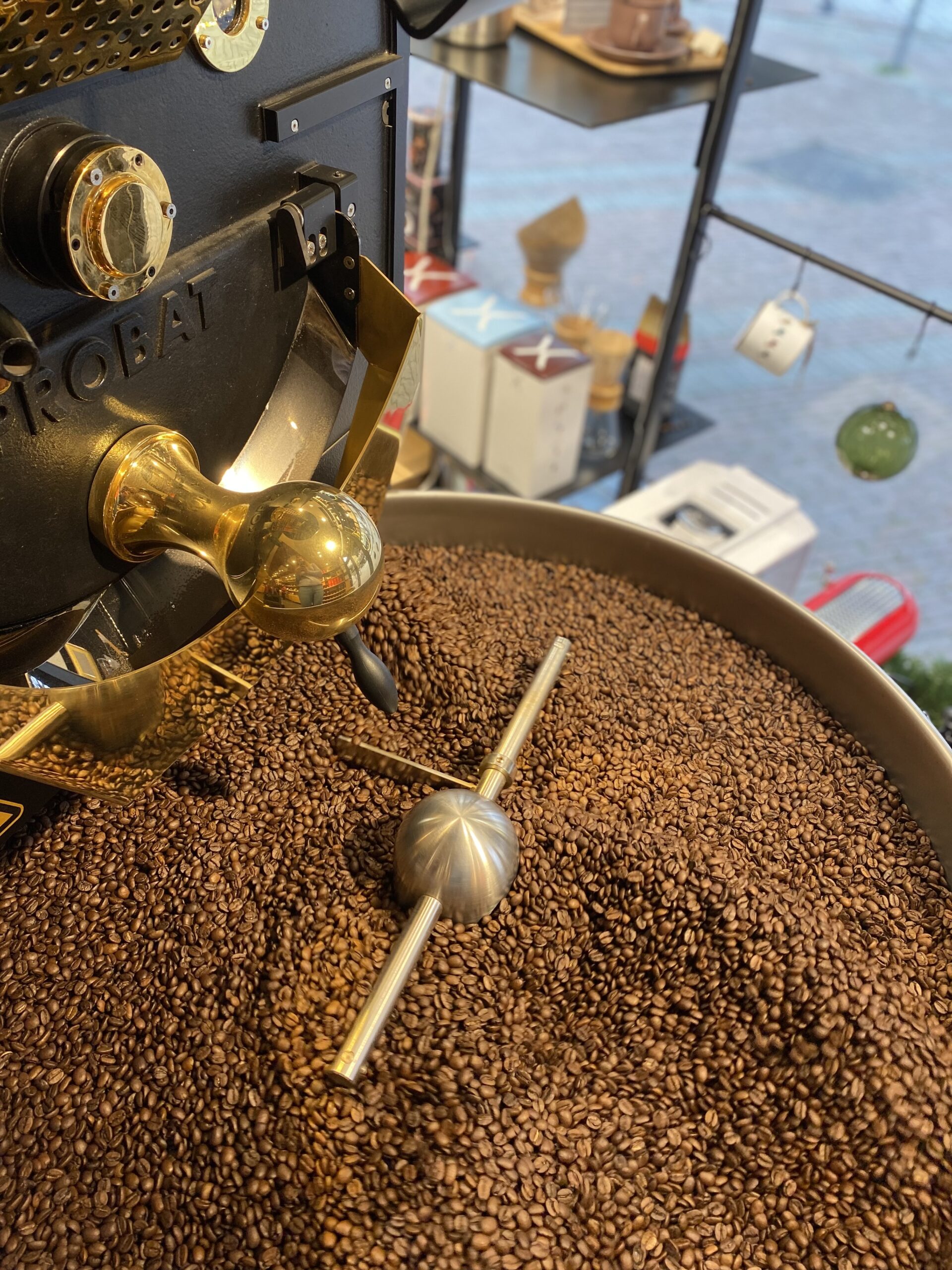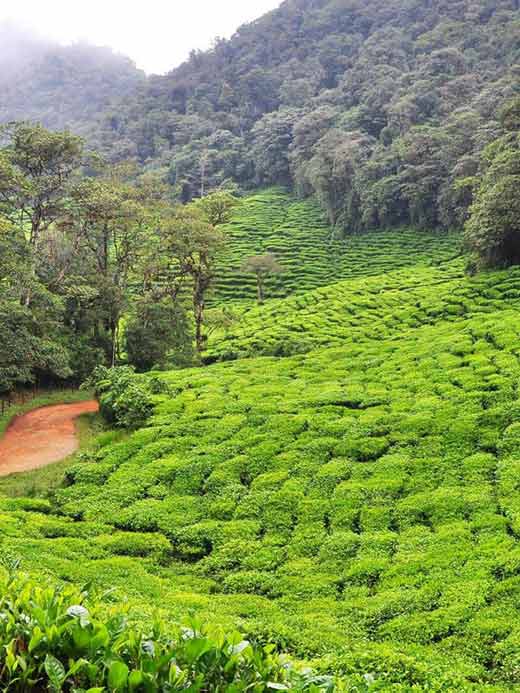Arabica or Robusta: which to choose?
Here are the main differences between these two coffee varieties:
- Taste profile :
- Arabica offers sweet, complex and fruity flavors.
- Robusta is more full-bodied and bitter, with woody, earthy notes.
- Caffeine content :
- Arabica: 1.5
- Robusta: 2.7
- Growing regions :
- Arabica: high altitude (1,200 - 2,200 m), cool climate.
- Robusta: low altitude (0 - 800 m), hot, humid climate.
- Worldwide production :
- Arabica: 75
- Robusta: 25
- Ideal preparations :
- Arabica: filter, French press.
- Robusta: espresso, mocha.
Quick comparison
| Criteria | Arabica | Robusta |
|---|---|---|
| Global share | 75 % | 25 % |
| Caffeine | 1,5 % | 2,7 % |
| Taste profile | Sweet, fruity | Full-bodied, bitter |
| Altitude | 1 200 - 2 200 m | 0 - 800 m |
| Preparations | Filtre, French press | Espresso, mocha |
Arabica is ideal for refined flavours and mild methods. Robusta, more intense, is suitable for lovers of strong coffees and preparations such as espresso.
Where do they grow?
Regions of origin
The geographical areas where these varieties are grown play a crucial role in their characteristics. Arabica, originally from the high plateaus of Ethiopia, is now grown in mountainous regions all over the world. Among the main producers are Colombia and Costa Rica, where high altitudes create ideal conditions for this delicate variety.
Robusta, on the other hand, is grown mainly in low-altitude tropical regions. Vietnam dominates world production, accounting for over a third of global supply. Uganda and Brazil are also major players, with hot, humid climates perfectly suited to this hardy variety.
Cultivation requirements
The conditions required to grow these two varieties differ considerably. Here is a summary of the main parameters:
| Parameter | Arabica | Robusta |
|---|---|---|
| Altitude | 1 200 - 2 200 m | 0 - 800 m |
| Temperature | 15 - 24 °C | 24 - 30 °C |
| Planting density | 3,000 - 10,000 plants/ha | 1,000 - 3,000 plants/ha |
| Disease resistance | Low | High |
Arabica requires specific conditions. As a CIRAD expert explains:
"Arabica likes cool climates without frost, and prefers mountain ecologies."
However, this variety is particularly vulnerable to the effects of climate change. For example, diseases such as coffee rust can devastate up to 90% of harvests in East Africa. On the other hand, Robusta, with its higher caffeine content (2.7% vs. 1.5% for Arabica), benefits from natural protection against pests, which reduces production costs.
These growing conditions also influence grain physical characteristics and processing methods, which we will explore in the next section.
Grain characteristics and production
Physical features
The physical differences between the beans play a key role in their processing. Arabica beans are oval, slightly larger and have a curved center line. They contain around twice as many sugars and 60% more lipids.
Robusta beans, on the other hand, are smaller, rounder and have a straight center line.
| Features | Arabica | Robusta |
|---|---|---|
| Shape | Oval | Round |
| Size | Larger | Smaller |
| Center line | Curved | Right |
| Sugars | Higher | Weaker |
| Lipids | Higher | Weaker |
These particularities influence harvesting and processing choices, which we will describe in detail below.
From field to roaster
Each coffee variety follows a specific post-harvest process, dictated in part by its physical properties. This process can determine up to 60% of the coffee's final quality. Arabica is generally harvested between October and December, while Robusta is picked from December to February.
Two main methods are used for harvesting and processing:
- Washed method (often used for Arabica)
- Skin and pulp removal
- Controlled fermentation of grains
- Washing and drying
- Natural method (suitable for Robusta)
- Drying whole cherries
- Lower production costs
- Suitable for small producers
"The flavour notes typically found in robusta coffee are woody, earthy, and sour... However, it's not the presence of individual compounds that creates the overall flavour of coffee, but the combination of several compounds." - Lisbeth Ankersen, Director of InnovaConsult ApS
One hectare of Robusta can produce around 6,000 kg of coffee.
"Handpicking robusta ensures only the ripe beans are picked, resulting in higher cup quality."
Finally, Robusta has a thicker mucilage layer than Arabica, which increases the risk of over-fermentation during wet processing.
sbb-itb-67eb2a5
Taste and caffeine
Taste notes
Arabica and Robusta offer very different taste profiles. Arabica is known for its sweet, complex flavors. It has fruity, floral, caramelized or chocolate notes, with a silky texture and well-balanced acidity.
Robusta, on the other hand, has a more intense, full-bodied taste. Its aromatic profile includes woody, earthy, dark chocolate and hazelnut notes. It is often more bitter and has a denser texture.
Caffeine content
In addition to flavor, the chemical composition of these two varieties plays an important role in their use and sensory characteristics.
| Features | Arabica | Robusta |
|---|---|---|
| Caffeine content | 1,5 % | 2,7 % |
| Taste profile | Soft and complex | Strong and bitter |
| Acidity | Balanced | More pronounced |
Robusta's higher caffeine content makes it a frequent choice for espresso blends. It contributes to a thicker crema and a pronounced bitterness.
Arabica develops sweet, woody aromas, with hints of almond, cocoa, caramel and malt, as well as fruity and buttery notes. This aromatic richness explains why Arabica accounts for some 60-70% of the world's coffee production.
These peculiarities also influence the selection of preparation methods, as detailed in our guide to roasting.
Preparation and roasting methods
Preparation guide
Each type of coffee requires a specific extraction method to reveal its flavors. Arabica, known for its subtle aromas, flourishes with gentle techniques such as filter or French press. Robusta, more intense and rich in caffeine, is ideal for preparations such as espresso or mocha, where it offers a generous crema and dense texture.
To prepare Arabica in the best conditions:
- Water temperature: between 90 and 95°C
- Grinding: medium
| Method | Arabica | Robusta |
|---|---|---|
| Espresso | Fine grinding | Very fine grinding |
| Filter | Recommended(medium grind) | Can be mixed |
| French Press | Ideal (coarse grinding) | Can be mixed |
| Mocha | Possible | Highly recommended |
Coffee roasting Van Hove

Thanks to this expertise, here's what you get:
- Arabicas: balanced aromas with hints of caramel and fruit.
- Robustas: rich, powerful body without excessive bitterness.
- Blends: harmonious combinations that combine the strengths of both varieties.
Finally, small-batch roasting guarantees optimum freshness and preserved aromas.
Conclusion
Arabica and Robusta beans differ in their aroma profiles, caffeine content and growing conditions. These characteristics have a direct influence on the way they are prepared and roasted.
Each of these varieties has its own special uses. Arabica is ideal for methods such as filter or French Press, which bring out its delicate aromas. Robusta, on the other hand, stands out in more intense preparations such as espresso or mocha, offering a powerful, full-bodied taste. Together, these two varieties satisfy a wide range of preferences among coffee lovers.
At Cafés Van Hove, artisanal know-how is at the heart of the way we bring out the best in these specialities.
"All our Van Hove coffees adhere to international standards for sustainable trade. In this way, we contribute to better conditions for producers and the environment. We are craftsmen focused on the freshness and quality of our products. Our coffee contains no preservatives, emulsifiers or flavor enhancers."
Thanks to this approach, each bean reveals its full aroma, from the finesse of Arabica to the power of Robusta. Our commitment to quality and respect for the environment can be felt in every cup, offering an experience faithful to the essence of each variety.
FAQs
What are the main differences between Arabica and Robusta coffees, particularly in terms of taste and caffeine?
Arabica offers a more subtle, complex taste, often marked by fruity, floral or slightly sweet notes, such as caramel or chocolate. Robusta, on the other hand, has a more intense, bitter taste, with earthy or woody nuances.
On the caffeine side, Robusta contains around twice as much caffeine as Arabica, giving it a more energizing character. These differences also influence preferences for certain types of roasting and extraction methods, such as espressos or filter coffees.
What are the differences between Arabica and Robusta in terms of growing conditions and characteristics?
Growing conditions play an essential role in the characteristics ofArabica and Robusta beans. Arabica grows mainly at high altitudes (600 to 2,000 meters) in cool, humid subtropical climates. It requires rich soil, alternating sun and shade, and is more susceptible to pests. These conditions enable it to develop complex, refined flavors.
Robusta, on the other hand, is a more robust plant that thrives at lower altitudes (200 to 800 meters) and tolerates warmer temperatures. It is less demanding in terms of growing conditions and more resistant to disease, making it a more versatile option, although its taste is often more full-bodied and less subtle than that of Arabica.
These differences have a direct influence on the quality, aromatic profile and use of beans in roasting and preparation methods.
What is the best way to prepare Arabica and Robusta to bring out their full flavour?
To bring out the delicate aromas ofArabica, use gentle methods such as pour over (manual filter) orAeroPress. These techniques extract the complex, subtle flavors of this type of bean.
For Robusta, on the other hand, which has a fuller-bodied, more intense taste, methods such as espresso or the moka coffeemaker are ideal. They highlight its robust character and higher caffeine content, perfect for an energizing, powerful coffee.


